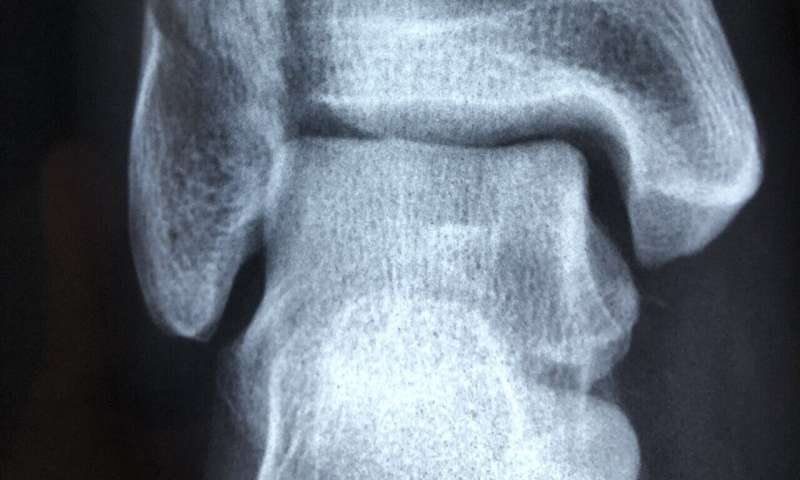Credit: CC0 Public Domain
A new study published in the Journal of Bone and Mineral Research has identified various factors that may indicate whether a person faces a higher likelihood of experiencing a bone fracture over the next two decades.
The study included 30,446 middle-aged women and men who were followed from the early/mid 1990s to 2016. A total of 8,240 participants (27%) had at least one fracture during a median follow-up of 20.7 years.
Older age, female sex, higher body mass index, a previous fracture, a family history of fracture after the age of 50 years, low leisure-time physical activity, heavy work, living alone, smoking, and no or high alcohol consumption were factors independently associated with a greater likelihood of experiencing a fracture. "Our results emphasize the importance of these factors in public health initiatives for fracture prevention," the authors wrote.
More information: Journal of Bone and Mineral Research (2021). DOI: 10.1002/jbmr.4249
Journal information: Journal of Bone and Mineral Research
Provided by Wiley






















